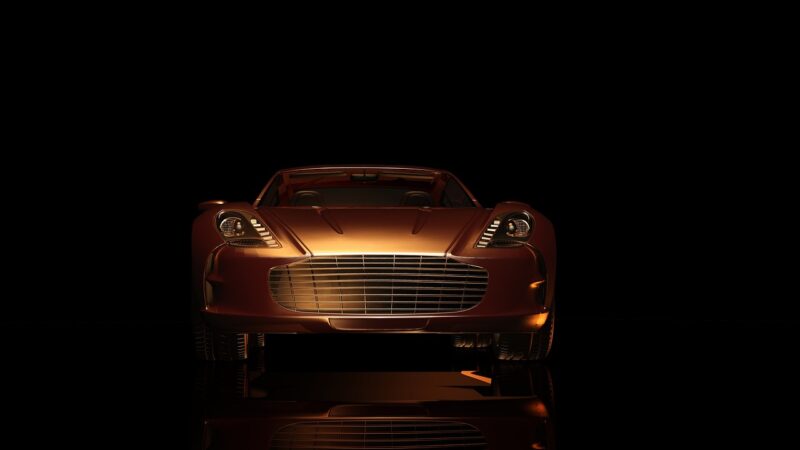What It Really Takes to Design a Car from Scratch: The Journey from Idea to Reality
November 11, 2024

Designing a car from scratch is a dream for many automotive enthusiasts and aspiring engineers. It’s a complex, multifaceted process that intertwines creativity, engineering, technology, and business acumen. In this article, we will take a comprehensive look at what it really takes to transform a spark of an idea into a fully functioning vehicle. Whether you’re aiming for a revolutionary electric car or a classic muscle car, the journey from concept to reality is anything but straightforward.
1. Understanding the Basics: What Does a Car Design Involve?
To start, it’s essential to understand the different aspects of car design. At its core, car design involves several stages, including:
- Conceptualization: This is where the initial ideas take shape, where sketches and mood boards come together for the first time.
- Design Engineering: Once the concept is established, detailed plans are created. This includes everything from the exterior shell to the interior layout and dashboard ergonomics.
- Prototyping: After the designs are finalized, a prototype is built. This can be a highly detailed model, showcasing the physical attributes of the final product.
- Testing: Prototypes undergo rigorous testing for safety, performance, and efficiency before they can enter production.
- Production Planning: This is the phase where the team determines how the car will be mass-produced, ensuring that quality and efficiency are prioritized.
Each of these phases requires a specialized skill set, a detailed understanding of automotive engineering, and a lot of collaboration.
2. Conceptualization: Igniting the Idea
The journey begins with a simple idea. This could be based on a particular need in the market, a vision for an eco-friendly vehicle, or even a nostalgic design from the past. To effectively harness this idea, designers use various tools:
- Sketching: Artists often start with hand-drawn sketches to visualize their concepts. These early sketches will evolve as feedback is gathered.
- 3D Modeling: Software tools like CAD (Computer-Aided Design) allow designers to create realistic representations of their vision, enabling them to understand dimensions, materials, and aesthetics better.
- Mood Boards: Designers curate images, color palettes, and textures to encapsulate the overall feel of the vehicle, guiding the design and branding process.
Creating a mood board can be particularly significant as it sets the aesthetic tone for the entire project and fosters creativity.
3. The Role of Engineering: From Design to Structure
Designing a car is not solely about aesthetics; it significantly involves engineering considerations. Different types of engineers play crucial roles in this phase:
- Mechanical Engineers: They focus on the vehicle’s performance, including the engine, suspension, and braking systems, ensuring that the design functions as intended.
- Electrical Engineers: With the rise of electric vehicles and advanced onboard technologies, electrical engineers ensure that systems like battery management, infotainment, and safety features integrate seamlessly.
- Materials Engineers: They determine what materials will offer the best combination of weight-saving, strength, and cost-effectiveness, potentially influencing fuel efficiency and safety ratings.
Effective collaboration among these engineers, paired with constant testing and refinement, is essential to transform design into functionality.
4. Prototyping: Building the First Model
The prototyping phase is one of the most exciting suggestions of the car design journey. Here’s what happens:
- Creating a Prototype: Based on detailed designs, a prototype is built, which can range from a basic model to a fully functional car. This stage often involves computer simulations or rapid prototyping techniques like 3D printing.{
- Digital Twins: Many manufacturers create a digital twin of the vehicle, simulating how it would perform in various scenarios before making physical versions.
- Refinement: Early prototypes often reveal issues that require adjustment, whether it’s altering the aerodynamics or improving interior ergonomics. Feedback from focus groups and testers can guide these changes.
Crafting a prototype is a balancing act that seeks to maintain the design vision while ensuring practicality and performance.
5. Testing: Ensuring Safety and Performance
Testing is a critical step to ensure that all design and engineering work validates before mass production. Here are significant aspects of this phase:
- Safety Testing: New cars must undergo crash tests to evaluate safety standards, which assess everything from structural integrity to airbag deployment.
- Performance Testing: Engineers evaluate handling, acceleration, braking, and fuel efficiency under varying conditions to ensure the car meets industry standards.
- Regulatory Compliance: Each vehicle has to pass regulatory checks to meet local and international standards for emissions, safety, and quality assurance.
Conducting thorough testing not only protects consumers but also complies with regulations, solidifying the brand’s reputation as a trustworthy car manufacturer.
6. Production Planning: Scaling for Success
Once a car passes testing, planning how to produce it at scale begins. A few factors to consider include:
- Manufacturing Processes: The design must be adapted to make it feasible for mass production. This includes selecting suitable assembly lines, ensuring quality control, and sourcing materials efficiently.
- Supply Chain Management: Coordinating suppliers for components and raw materials, optimizing logistics, and ensuring timely delivery are integral to keeping production on schedule.
- Marketing Strategy: Effective marketing campaigns must be crafted to create buzz around the new vehicle, highlighting its unique selling propositions to target audiences.
An effective production plan ensures that the launching vehicle can meet demand while maintaining quality levels that customers expect.
7. Conclusion: The Dream Becomes Reality
Designing a car from scratch is a blend of creativity, engineering precision, and business acumen. From initial ideas to production, the process is intricate and demanding but ultimately rewarding. For those daring enough to embark on this journey, the end result can provide profound satisfaction: a vehicle that carries a piece of its creator’s vision, ready to take to the open road. It’s a challenging path filled with learnings and triumphs, transforming a drive of passion into a tangible product that can change lives.
If you dream of becoming an automotive designer or innovator, embrace the journey ahead and remember: every great car starts as just an idea waiting to be unleashed on the world.







